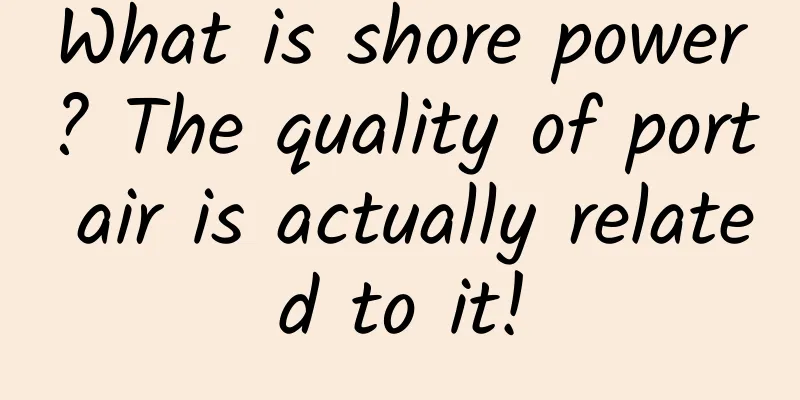The UK is accelerating the development of the sixth-generation fighter jet, pulling in Japan and Italy, and also creating a "digital revolution"

|
LONDON, United Kingdom — Three years after the United Kingdom and its partners announced development of a sixth-generation jet fighter named Tempest, technology maturation continues, with the program embracing digital engineering concepts to shorten its development timeline. Tempest, also known in the UK as the Future Combat Air System (FCAS), is being developed by the British, Swedish and Italian air forces and their respective prime contractors BAE Systems, Saab and Leona. This sixth-generation aircraft is a collaboration between the United Kingdom, Italy, and Sweden, with the United States and Japan also participating. Note the image of the drone being controlled in the upper left corner. Europe is once again divided over the sixth-generation aircraft program led by France and Germany and Spain, also known as the Future Combat Air System (FCAS). Recently, Japan joined the program in a limited capacity. The United States also seems to be involved, but it is a cooperative relationship, not a direct involvement, so there are no Americans in the project for now... at least on the surface. While the initiative began in 2015, it wasn’t until three years later that Tempest was unveiled at the Farnborough International Airshow. Its concept calls for the platform to be both manned and unmanned, and to be able to control “swarms” of small drones. The picture shows British Defense Secretary Gavin Williamson displaying a full-scale model of the UK's sixth-generation fighter jet "Tempest" at the 51st Farnborough International Air Show on July 16, 2018. Air Commodore Jonny Morton, who heads the Royal Air Force's Future Combat Air program, said the program is still in the concept and development phase. "The purpose of this phase is to see how it goes, make an assessment and then in late 2025, go to our governments, the UK, Italy, Sweden -- and possibly Japan -- and say, 'This is our plan. This is what we can deliver. This is the timeline,'" he told the International Conference on Defence and Security Equipment in London in September. He added that the governments of the participating countries would then make a decision on how to proceed with the project. Meanwhile, Air Commodore Jez Holmes, head of the Royal Air Force Rapid Capability Office, said about 2,000 workers were already working on the development, located in about 300 companies or institutions. Collins Aerospace, Rolls-Royce and MBDA are other major contractors involved in the project. “We have made huge progress. From a UK perspective it is really important to make sure we re-skill those design skills that are so critical to the core of our power generation capability,” Holmes said. The project is embracing digital engineering, including concepts such as digital twins, and additive manufacturing techniques to dramatically reduce the time it takes to conceive, develop and produce a new generation of jet fighters. That accelerated timeline was one of the main focuses of the project, Morton said. “One of our goals was to break the 40-year cycle where something is conceived, developed and built, and then delivered 20 years later, and you start thinking about what’s next and thinking, ‘Where did my industry expertise go?’” He added that Tempest is targeting a 10- to 15-year development cycle and flying the first aircraft by 2035. The project is embracing the digital engineering concepts espoused by former Air Force acquisition chief Will Roper before he left government. Roper's name and concepts came up several times during panel discussions at the conference. Morton acknowledged that Roper, now a senior consultant at consulting firm Pallas, was an advisor to the project. "Will Roper... was hired as a junior advisor to the project. Constantly challenging us, asking us challenging questions and allowing us to ask him about his experiences," Morton said. Will Roper, the former US Air Force acquisition director, left his post and joined a private consulting firm, which is another typical "revolving door" deal. The US Air Force does not seem to be very interested in the "Digital Century Series" he proposed, and it is possible that some people will leave and the tea will be cold. Company officials of the group said that the "digital engineering revolution" will not only help significantly shorten the development timeline of the "Tempest" project, but will also help solve the demand problems that have plagued past projects. Morton talked about the need to "future proof" the Tempest program. The problem with jet fighter programs in the past was their decades-long development timelines. Setting requirements too early and "carving them in stone" resulted in aircraft that were already obsolete by the time they were finally deployed. "Sovereignty" and "freedom" are two buzzwords often repeated by industry and government officials. Unlike the F-35 Joint Strike Fighter program, which also began development as an international program, but under the leadership of the United States, partner nations will be able to modify and upgrade the aircraft at will. The British government had planned to buy 138 F-35B short take-off/vertical landing fighter jets for the British Air Force, but the plan is currently in flux. Morton said that "freedom of action, freedom of modification and sovereign control" are attractive to new potential partners. One such new potential partner is Japan. Although Japan has not yet officially become a partner, a Japanese flag flew along with the flags of Sweden, Italy and the United Kingdom at the Royal Air Force's Tempest project stand at the Defence Equipment International (DSEI) exhibition in London, UK. Japan is currently conducting energy studies for the project, Morton said, adding that Japan would be a good partner because it is developing its own sixth-generation jet fighter, the FX, with the same 2035 timeline and operating in a similar threat environment. Concept map of Japan's FX fighter jet. It is self-evident who this so-called "threat environment" refers to. Michael Christie, director of the Future Combat Air (FCAS) program at BAE Systems, welcomed Japan as a partner because of its deep industrial capabilities. He said Tempest would require agility and flexibility to add new partners. "The system will change. Threats will change, requirements will change," he added. "We are not going to carve up the program as we have done in previous programs. We are going to behave like a single program, driven by a single enterprise and run like a single program again," he said. The United Kingdom is one of the tier-one international partners on the F-35 program, contributing 10% of the development costs, although no one among the speakers mentioned it by name. "Our goal is to create something that everyone benefits from, and I believe that is a very different goal than other collaborative programs over the past few decades," Christie said. "If we all act like three (independent) organizations looking after our own values and our own agenda, we're not going to get there. We have to have a single agenda," he said. "Don't act like shareholders," he warned. "We're only going to get stronger as we bring in partners from Italy, Sweden and Japan," Holmes said. Work on various subsystems and concepts continues. Concept map of the British loyal wingman "Mosquito" project. In the future, it will cooperate with "Storm" in combat and is also considered one of the sub-projects. Conrad Banks, chief engineer for future projects at Rolls-Royce, said the current concept is for the Tempest to have a hybrid engine. He said the company currently has 500 engineers working on the project. "We are combining the gas turbine and the electrical system as an integrated power system," he said, describing the concept as a "flying power station." It would produce 10 times more power than the Eurofighter Typhoon, another aircraft being developed by an international consortium. An imaginary picture of the Tempest fighter (bottom), the F-35 (top), and the Typhoon (center) flying side by side British Typhoon fighter That energy could be used in sensors, avionics and directed-energy weapons, he said. The Royal Air Force has said that the MFRFS radar used by Tempest is only one-tenth the size of existing radars, but four times more accurate. The amount of data collected per second by this radar is equivalent to the Internet traffic of the entire city of Edinburgh (Edinburgh has a population of 482,000). Then, powerful signal processors will use radar data to draw battlefield images for pilots, showing battlefield information such as friendly equipment, enemy aircraft, ground targets, and air defense systems. This requires a lot of electricity. "We're not abandoning the gas turbine, we're embracing the gas turbine and the electric system," he added. An integrated electric system will control the complex interchange between jet fuel and the electric system. It won't be like a hybrid, where drivers input their travel plans in advance so that the computer can calculate when they need extra power in places like highways. "We have an intelligent power manager that is being developed through the Tempest project that can decide whether power should be transferred from the gas turbine to charge the battery or vice versa," Banks said. Artificial intelligence will learn the best way to use energy in computer algorithms. It "learns the most efficient way to transfer power from one spool to another, from the engine spool to the battery, and from the battery to the engine," he said. Meanwhile, Leonardo has signed a contract with British supplier 2Excel Aviation to provide equipment for a Boeing 757-200 passenger aircraft as a test platform for the Tempest project. The picture shows my country's scientific and technological test platform The test aircraft, called Excalibur, will be used to conduct sensor fusion, autonomous operations and communications, and provide a "real world" platform for an aircraft that has been developed primarily through digital engineering, according to a press release. The "flying lab" is envisioned in the later stages of the program, he said. Holmes said conducting real-world trials of the aircraft will be critical. "When we look at sensors, it's important that we test them in representative environments. They will often work perfectly on the test bench and in the lab, but when you get them into a real environment -- the clutter of a real (electronic warfare) environment -- it becomes more challenging." It's not uncommon for something to work well in the lab but fail when it hits the battlefield. An audience member asked Holmes what sacrifices the Tempest might make to achieve stealth. Is there a drive for higher aircraft performance than the Eurofighter Typhoon, or will some performance be sacrificed for stealth, as is the case with the F-35? The F-35 sacrificed its body performance for stealth, and its flight performance is far less powerful than the F-22, but its electronic equipment is indeed advanced. He said that information will be the key to victory or defeat in future wars. So our focus is definitely on getting the sensor and information architecture right. If necessary, we may change other capabilities for that,” he said, adding that he did not want to reveal details publicly. British "Tempest" fighter AR function helmet "But we do understand what is important to us," he said. "The UK and our international partners are accelerating a very dynamic programme," said Richard Berthon, director of future air warfare at the UK Ministry of Defence. The “digital revolution” can be met with skepticism, he said. “Anything with the word ‘revolution’ in it, you should be skeptical and suspicious – whether they mean something new and not just business as usual. But I sincerely believe that we have something revolutionary on many different levels.” |
<<: A century of Gongga: mankind's exploration of the snow-capped mountains
>>: How did beetles get their hard shells?
Recommend
AE+PS Million-dollar Post-production Advanced Course Animation Special Effects
AE+PS Million-dollar Post-production Advanced Cou...
Hisense smart TV changes leadership: turn around or go straight?
Last night (June 9), news of a personnel change ...
iOS 9 Learning Series: UIKit Dynamics
UIKit Dynamics was first introduced in iOS 7, all...
【Analysis Report】 Metaverse related analysis report Baidu Cloud download
【Analysis Report】Introduction to Metaverse-relate...
Los Angeles is experiencing the most destructive fire in history. Why are the wildfires in California so severe? | Expo Daily
35 fires in 6 days! Why are California wildfires ...
The stability of the iOS system is getting worse and worse, and it has affected the core functions
I started using iOS 4, first with iPod touch, the...
Apple iOS 14.5 is officially released. How will App Tracking Transparency affect the advertising world?
In the early morning of April 27, Apple officiall...
The new mirror for the young lady? 360 Mobile Phone N6 Pro has a new way to play with the full screen
With the advent of full-screen phones, the strate...
Is brewing tea in a thermos cup toxic and carcinogenic? What food safety experts say
"When people reach middle age, they can'...
If you work in the Internet industry, do you really understand traffic analysis?
In my current job, I come into contact with many ...
How to start online channel delivery from scratch?
Nowadays, most online education industries use on...
The price of experimental monkeys has soared 20 times! Why is it so hard to find a monkey now?
The price of experimental monkeys has risen from ...
Analysis and judgment of the decline in user activity!
User behavior data is a foundation that can help ...
Is superimposed infection terrible? Five common misunderstandings about respiratory diseases in one chart!
Recently, topics such as influenza, mycoplasma pn...
World Migratory Bird Day: It is said that migratory birds fly south, but where exactly does “south” refer to?
Zhong Zhenyu May 11 is World Migratory Bird Day. ...


![[Smart Farmers] Focus on Document No. 1丨“Operation Manual” for Comprehensive Rural Revitalization: Keep the Bottom Line, Promote Revitalization, and Strengthen Guarantees](/upload/images/67f244b372738.webp)






